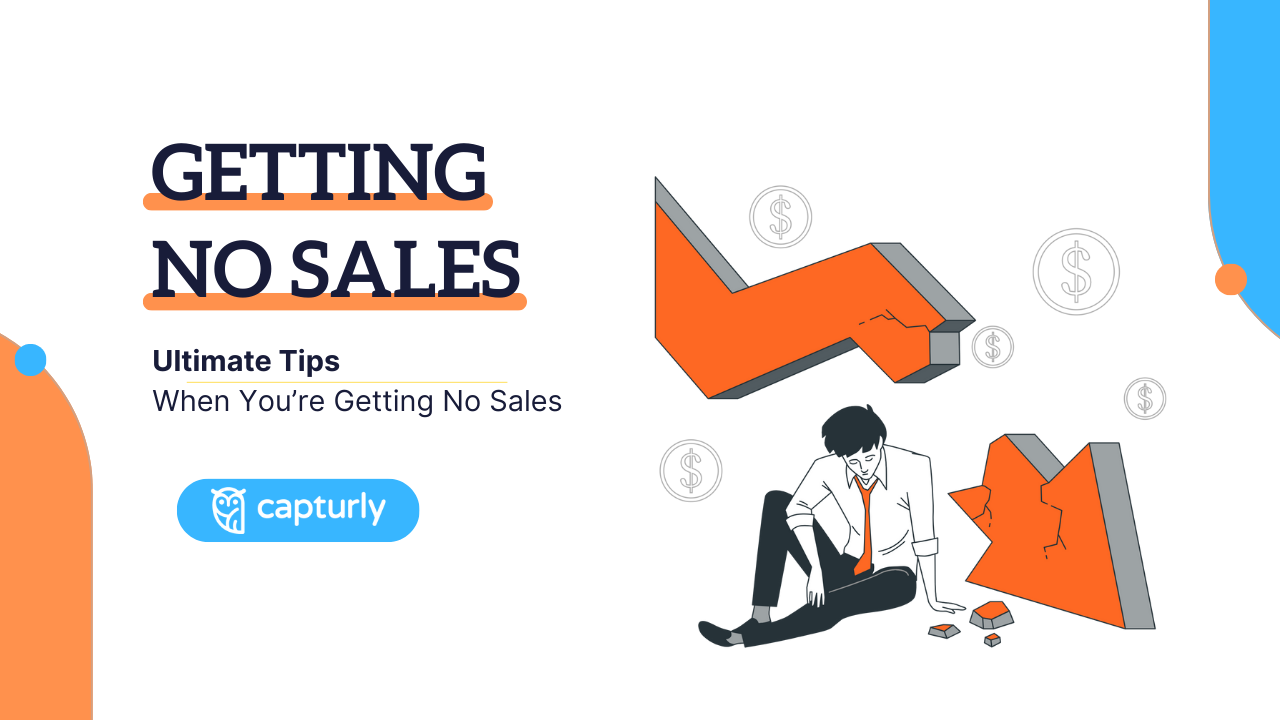It can be very frustrating when you think you’ve worked hard to earn success, it avoids you. This is the same in the world of webshops. Creating a webshop means a lot of work. Selecting your target audience, creating a site based on their needs, determining the price of your sales, or creating a better and better user experience.
These are just a couple of examples of what you need to do to create an efficient webshop, but there are hundreds of other aspects you also need to take care of. That’s why, it is one of the most devastating moments when you find out that a relatively low number of people buy products from your site, a very low number compared to your expectations.
- What can be the problem?
- Did I spoil something?
- That’s no chance to have better numbers?
These types of questions appear in most of our minds in a situation like this. Even though I always say it all depends on the unique circumstances, there are a couple of things you can learn before an escalated crisis.
In this article, I differentiate those issues that you are not responsible for and those that you are responsible for. Later, I will tell you some tips on how to avoid these problems and get more sales in a matter of time.
Table of Contents
Why are people not buying from you?
It might seem simple to figure out why people aren’t buying from you: maybe only a few folks have visited your site, way fewer than you expected.
But that’s just one of many reasons. First, we need to organize these reasons in some way.
The deal is, we can sort these problems into two groups:
- External issues
- Internal issues
The next two chapters will guide you in understanding what these expressions mean and help you figure out what kind of problem you’re really dealing with.
What are the external issues?
External problems are problems caused by factors beyond the direct control of the company. Even if you do everything right, these factors can cause you to fail.
So what can you do about it? There are two different solutions to this problem:
- Adequate adaptation: This requires a lot of creativity because you have little time to adapt to the problems that arise.
- Strategic planning: This time you prepare for these external issues before launching the site.
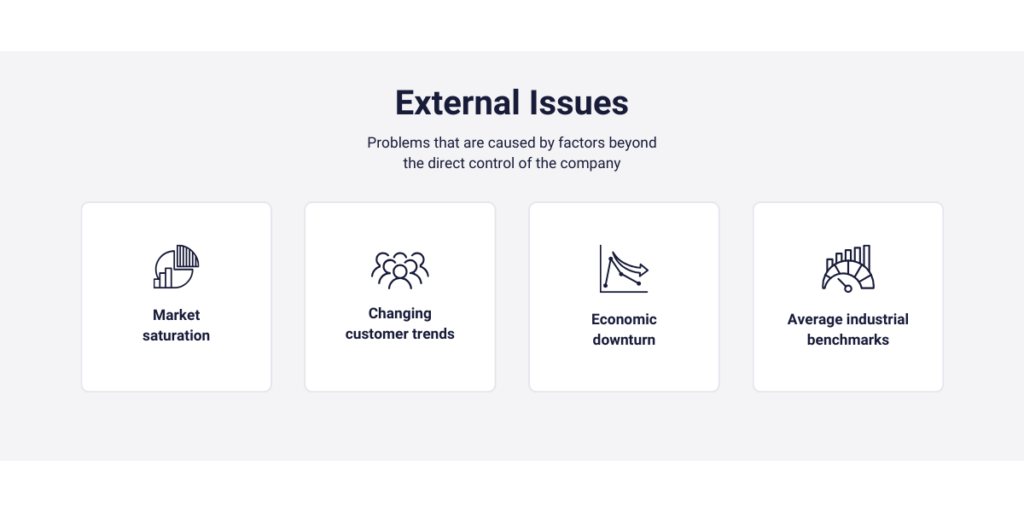
Although external problems are less common than internal problems, there are different types, such as:
1. Market saturation
Market saturation means the industry you want to participate in the online world is completely full, and you cannot convince new potential buyers to buy your products.
You can avoid this situation by just doing some research about your industry before you start to participate.
2. Economic downturn
In this case, your potential buyers have a lack of money to buy your products due to a bad economic situation.
The best you can do here is to figure out what products these people require in these hard times and switch to selling those.
3. Changing customer trends
A situation can occur when you are constantly selling your products for fifteen years, and your traffic and your sales started to decrease in the last couple of years.
This usually happens because of the changing trends, when customers find other ways to replace your products. This is a usual behavior, so always track your competitors to find out new methods, replacements, or new procedures that can endanger your products sales.
When you are already in it, my best advice is a whole new rebranding to go back on track. Luckily we wrote an article about that topic as well.
4. Average industrial numbers
The reason why you get less sales than you imagine may come from simple industrial trends, and numbers. As sometimes the industry that you work in generally lacks in the online space.
There are average conversion rates and bounce rates in different industries, which we all gathered and shared with our publicity in different articles. I encourage you to check them and compare them to your numbers.
If you have a lower number than that, it is definitely not an external industrial issue, but if your numbers are relatively higher than those you might think of it as the main source of your problem.
Although external issues may appear from time to time, it is very rare that for an immediate change of your selling numbers, only external issues are responsible for.
That’s why we need to check the types of internal issues as well.
What are the internal issues?
Internal issues mean that the problem happens within your own organization. It’s not great because you can’t blame others or external factors. However, the upside is that if you identify and fix these issues, your sales can improve quickly.
The general solution for an internal issue is to enhance your overall organizational efficiency.
However, different internal issues need different problem-solving skills. So, let’s explore some types of internal issues and tips to solve them.
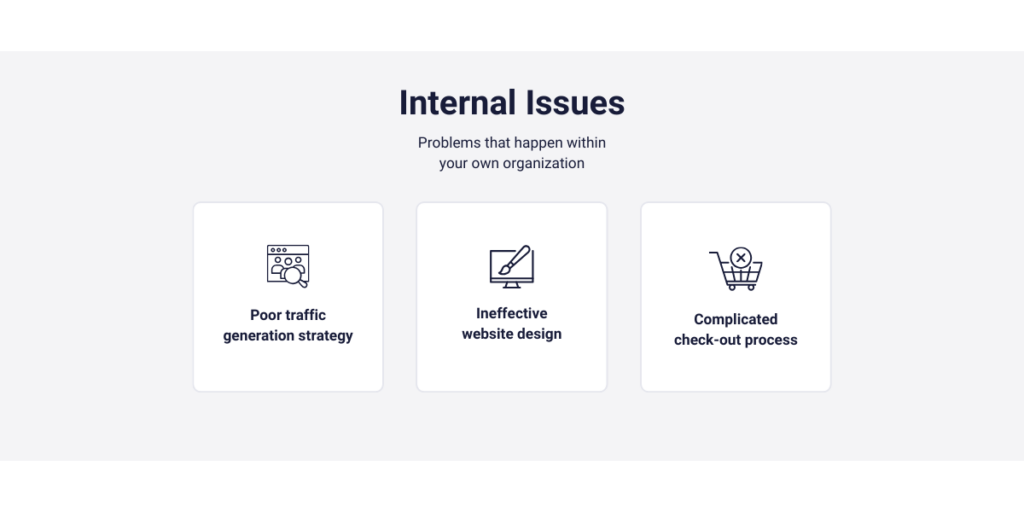
Types of internal issues and tips to solve them
In this section, we’ll discuss three internal issues and provide tips on how to solve them. Sometimes, the problem is a combination of these, so pay attention to where your issues usually occur.
But how do you do this? How can you be sure which issue or element of your site is responsible for the lack of sales?
Analytics tools show you if you have internal issues
Analytics tools help you gather information about your visitors and their user experience. Most tools provide a heatmap service where you can check the engaged elements of your site based on your viewers’ clicks, scrolls, or taps.
This service helps you determine if you have an ineffective website design. However, many heatmap services go beyond this and offer a conversion funnel function. This allows you to check the efficiency of your designated buyer’s routes and more.
If you don’t get sales, you can get further explanation by analyzing each user session. These tools can track rage-clicks, JavaScript errors, and provide useful filtering options on websites, helping you figure out the main reason for not getting enough sales.
Capturly Analytics, one of the most complex tools on the market, can perform all these functions. If you’re desperate to find your main internal issues, our tool can help you identify them.
Problem 1 – You don’t have enough visitors
Certain times, it’s easy to categorize why you have no sales: because you don’t have enough visitors as well. You probably already calculated how many buyers you need to make some profit. But do you know how many visitors you need on average to make one sale?
Many researchers have come to the same conclusion: 50-100 quality visitors add up to one sale. That means, if you sell cheap products with a small profit margin, you need a tremendous number of visitors.
Driving traffic to a website can be challenging, but if you’ve categorized your target audiences, your marketing strategy, and your advertising plan, you are one step closer to success but still not close enough.
Tip to solve: Better marketing strategy
If you cannot find the right number of visitors, you need to rethink your marketing strategy. To define a good marketing strategy, marketers work with a 4P system. 4P means product, price, place, and promotion, in that order. You need to work out what you sell, at what price, and where. And after that, you must think of how you will engage your potential customers.
You need to answer the following questions:
- What is the best method for promoting your products?
- Do you want a push or pull tactic?
- Do you certainly search for your target audience on the right platforms?
For example: if you want to reach 45-60-year-old women with an interest in gardening, you better not spend most of your money on TikTok advertisements.
The reason: your potential target audience isn’t available on that platform. Maybe, it’s better to promote them through TV advertisements.
You also need to pick whether you need a huge amount of buyers, or just a few. If just a few, for example, if you sell luxurious items, you need more tailored, and personal advertisements. And there are hundreds of other questions you need to find answers to.
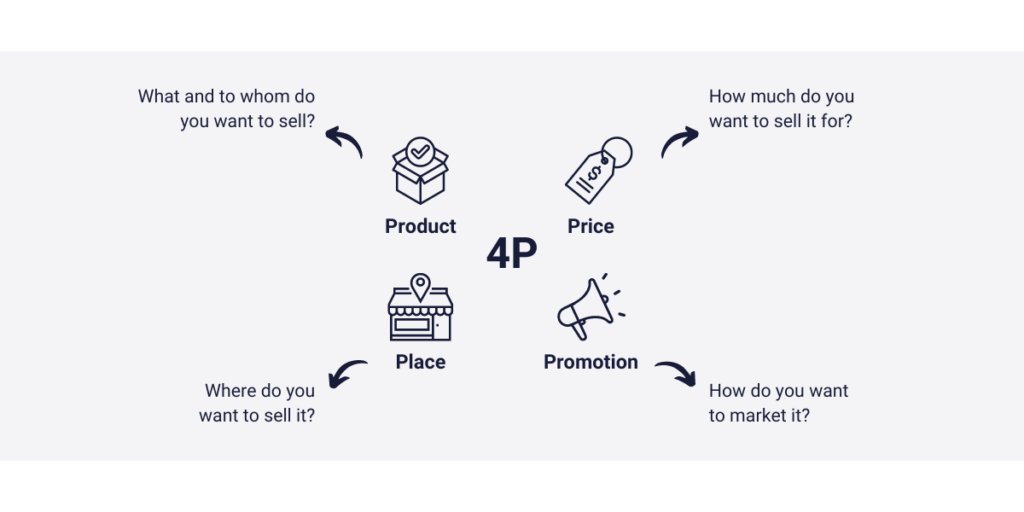
Problem 2 – You have an ineffective website design
Think of your website design like meeting a person you find attractive. The inner qualities matter, but it’s the outer appearance that captures your attention first.
This holds true for websites too.
If your site looks unattractive, it loses credibility. When credibility is lost, most potential clients won’t buy from you. Even if you offer great products, low prices, or an easy-to-navigate site, these factors won’t matter. That’s why paying attention to your site’s design is crucial.
Tip to solve: Make your website design clear and user-friendly
Creating a charming site doesn’t mean spending a lot of time on fancy designs. It’s enough to create designs that people are familiar with. Look at what successful websites like eBay, Amazon, and other major e-commerce sites offer and get inspiration from them.
People want two things: user-friendliness and clarity. Luckily, these usually go hand in hand.
You can achieve this by using website builder tools available on the internet, like Wix, Shopify, Squarespace, and GoDaddy. These tools provide templates for clear and user-friendly designs that capture your visitor’s attention.
Problem 3 – Your check-out process is complex and inefficient
Assuming you’ve addressed the design issue and visitors are spending more time on your site, the next challenge is converting these visitors into buyers.
You may have clicks, but no sales. The problem could be various things: your prices may be too high, you might not offer worldwide shipping, your payment process might not be considered secure, or your checkout process could be too long and inefficient.
The last issue is quite common. It means that even if potential buyers want to make a purchase, the shopping journey is too problematic.
The average cart abandonment rate is a useful percentage ratio showing how many visitors leave your site before making a purchase. Research the rate for your industry and compare it to your statistics. If yours is higher, optimize your checkout process.
Tip to solve: Optimize your check-out process
As we covered this topic in one of our newly-published articles we discovered many tips with great efficient ratios. To optimize your check-out process you need to create a transparent pricing first (no hidden costs at the end of the shopping journey and ensure that your customers trust you).
After you accomplish the first important task, then you need to give all of the crucial information to your buyers before the actual purchases.
- How long does the shipping take
- How much will it be
- How many payment options can you provide
If you communicate these beforehand, you can be sure that the visitor won’t change his mind slightly before making the purchase.
Then you must think about how you can make their route easier. You must establish a route that nobody can miss. No hidden buttons, and no distracted elements. It must be something that even a blind man can follow. And of course, two other very important things: continuous bug fixing, and looking after the potential buyer’s thoughts and comments. Both of these will encourage you to improve from time to time.
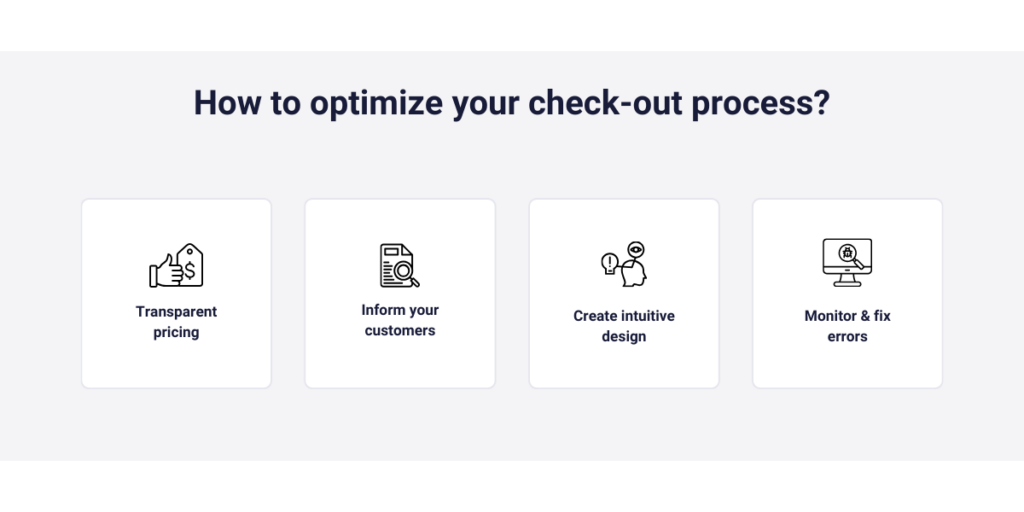
Conclusion
In this article, we discovered the two types of issues, since that is the first you need to check. If you’re getting no sales, you can’t blame only yourself, as industrial trends, economic downturns, or market saturations are all can lead to this exact problem.
But if you all went through these, and realized that the issue comes from your own mistake, you still don’t need to be afraid. You need to detect what type of problem you have.
- You don’t have enough visitors?
- Do your visitors quickly exit your site?
- Do your visitors navigate themselves through some parts of your funnels and then disappear?
These problems all require different solutions. I hope these tips will help you to get more sales shortly, and you can reach those heights where you belong.
Don't forget, sharing is caring! :)

